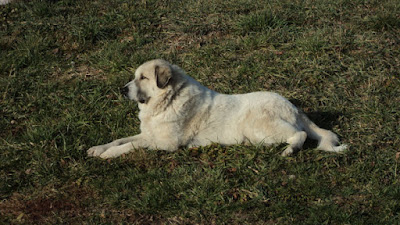The last 3 weeks have been a scorcher and we are looking forward to the relief that started today. The exhaustion that vegetable farming brings this time of year is double-edged. You have to be careful not to strain yourself in the heat, while the end of the day weariness brings a deep sleep and rejuvenation. Along with the rest, the food we get to be surrounded by helps keep us sustained.
We will be doing a lot of digging over the next month to get the potatoes out of the ground. The season has started out good with a nice harvest of Purple Vikings. We have been eating them non-stop for the last week. Last night I steamed some to use in potato salad tonight.
 |
| Potato, onion and cutting celery ready for dressing |
Simply steam 2 lb of potatoes (cut into chunks) until tender, let cool overnight and then mix with 1 medium sweet onion (cut into slivers), 2 tablespoons of chopped cutting celery, and a dressing of 2 tbsp brown mustard, 2 tbsp mayo, 2 tbsp garlic oil, salt and pepper. Summertime yum.
| Summer savory and basil in the field |
A new addition to the herb list this week is summer savory. This wonderfully aromatic fresh herb goes especially well with cooked potatoes or tomatoes. Similar in flavor to thyme, it is also a great dried herb, so you can hang it in your kitchen until it is crumbly enough to store in an airtight jar.

